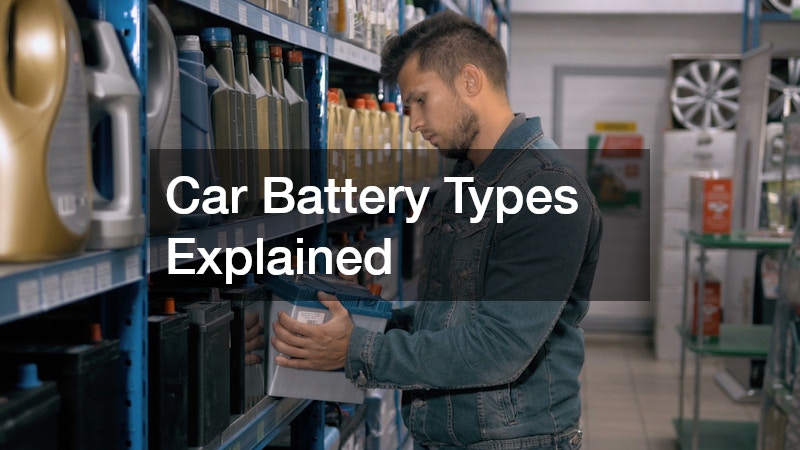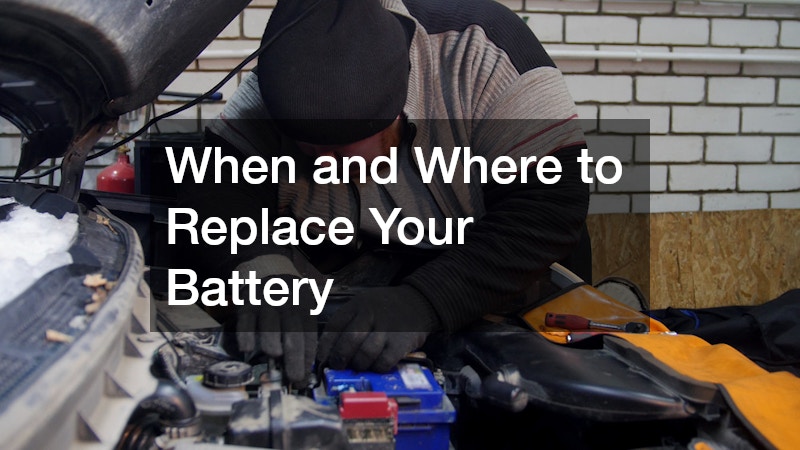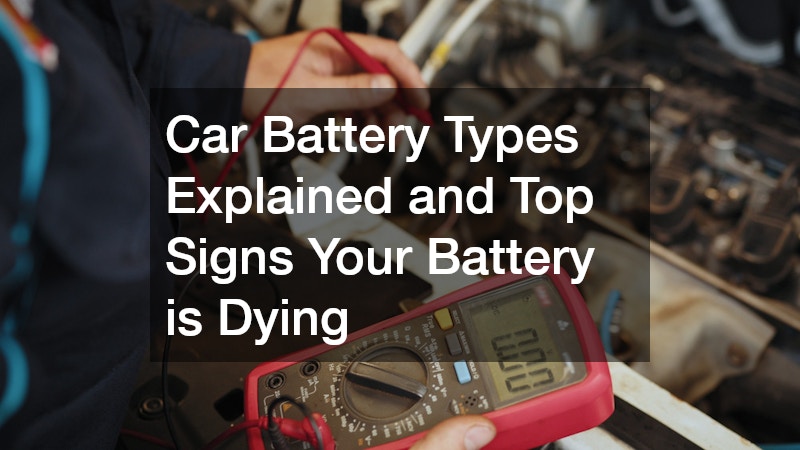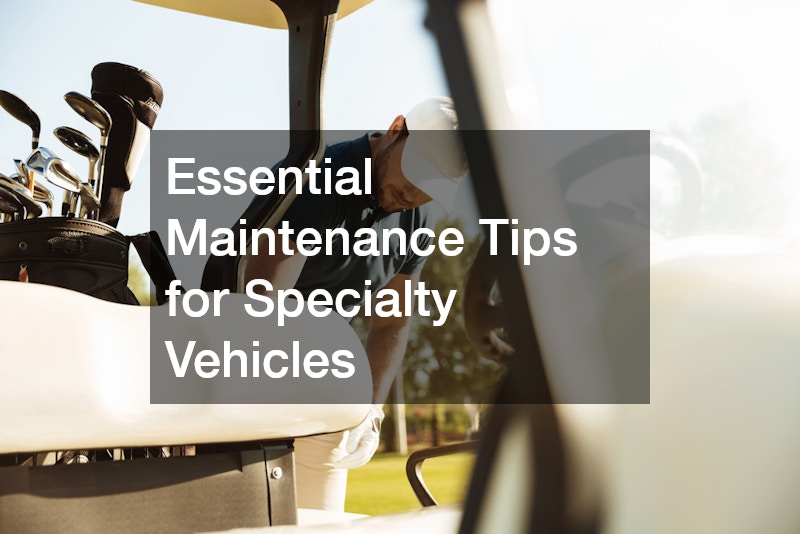
- Choose the right battery type for your car’s power demands and driving habits.
- Pay attention to warning signs like dim lights, slow starts, or clicking sounds.
- Replace your battery every 3–5 years to avoid sudden breakdowns.
- Perform basic upkeep like cleaning terminals and checking voltage regularly.
- Buy from a battery store that sells all kinds of batteries for expert advice and better selection.
- Replace before it fails to save time, money, and avoid roadside emergencies.
Your car battery plays a critical role in keeping your vehicle running smoothly. It powers everything from the engine’s ignition to your dashboard electronics and headlights. Yet, many drivers overlook the battery until it fails at the worst possible time. If you’ve ever turned the key and heard a slow crank or nothing at all, you know how frustrating (and avoidable) a dead battery can be.
Understanding the different types of car batteries and learning the early warning signs of battery failure can help you make better decisions for your vehicle. And when it’s time to replace your battery, choosing a battery store that sells all kinds of batteries ensures you get the right match for your car, driving style, and budget.
Why Understanding Car Battery Types Matters
Not all car batteries are created equal. From your daily commuter to a high-performance sports car or off-road vehicle, each one demands a different level of power and reliability.
The right battery:
- Ensures optimal engine performance
- Prevents unnecessary electrical issues
- Extends your vehicle’s lifespan
- Saves money in the long run
By knowing what battery type your vehicle needs, you avoid the guesswork and prevent compatibility issues. Plus, battery technology has advanced significantly in recent years, giving you more choices than ever before.
Car Battery Types Explained

Whether you’re shopping at a dealership, local auto parts store, or a specialized battery store that offers a wide range of batteries, it helps to know the pros and cons of each option.
1. Flooded Lead-Acid (Wet Cell) Batteries
These are the traditional, most commonly used batteries found in many vehicles. They’re affordable and reliable for everyday driving.
Key Features:
- Contains a liquid electrolyte solution
- Requires occasional maintenance (e.g., refilling distilled water)
- Shorter lifespan compared to other types
Best For: Older vehicles or drivers on a tight budget.
Pros:
- Affordable
- Widely available
- Easy to recycle
Cons:
- Needs regular maintenance
- More prone to leaks and spills
2. Absorbent Glass Mat (AGM) Batteries
AGM batteries offer enhanced performance and durability compared to traditional options. Instead of free-flowing liquid, they use a fiberglass mat to hold the electrolyte in place, which prevents leaks. This design makes them ideal for vehicles with high electrical demands, such as those with advanced safety features, infotainment systems, and start-stop technology.
Key Features:
- Sealed, maintenance-free design
- Charges faster than flooded batteries
- Resistant to vibration and corrosion
Best For: Vehicles with start-stop systems, SUVs, and modern cars with lots of tech.
Pros:
- Longer lifespan
- Deep cycle capable
- Performs better in extreme temperatures
Cons:
- More expensive than wet cell batteries
- May be overkill for basic cars
3. Gel Cell Batteries
These use a thickened electrolyte (gel) that doesn’t spill, making them ideal for rugged or off-road conditions.
Key Features:
- Sealed and maintenance-free
- Performs well in deep discharge situations
- Sensitive to overcharging
Best For: Motorcycles, off-road vehicles, and vehicles in harsh terrain.
Pros:
- Excellent for rough rides
- Long shelf life
- No gas emissions
Cons:
- Requires special chargers
- Costly compared to flooded batteries
4. Lithium-Ion (Li-ion) Batteries
Found mainly in electric and hybrid vehicles, lithium-ion batteries offer high power in a lightweight package.
Key Features:
- High energy density
- Low self-discharge rate
- Longer lifecycle
Best For: EVs, hybrid vehicles, and high-performance sports cars.
Pros:
- Lightweight
- Extremely long lifespan
- Fast charging
Cons:
- Very expensive
- Requires specialized battery management systems
5. Enhanced Flooded Battery (EFB)
Designed for vehicles with mild start-stop technology, EFBs offer better performance than traditional flooded batteries.
Key Features:
- More robust cycle life
- Handles partial state-of-charge use better
- Not as powerful as AGM
Best For: Economy cars with basic start-stop systems.
Pros:
- Cheaper alternative to AGM
- Better performance than a wet cell
- Maintenance-free
Cons:
- Shorter lifespan than AGM
- Not ideal for high-drain applications
Battery Type Comparison Table
| Battery Type | Maintenance | Lifespan | Price | Best For |
| Flooded Lead-Acid | High | 3–5 years | $ | Older/basic cars |
| AGM | Low | 4–6 years | $$ | Start-stop vehicles, modern cars |
| Gel Cell | Low | 4–6 years | $$$ | Off-road, motorcycles |
| Lithium-Ion | None | 8–10 years | $$$$ | Electric and hybrid vehicles |
| EFB | Low | 3–5 years | $$ | Budget-friendly start-stop vehicles |
Top Signs Your Car Battery Is Dying
Recognizing battery issues early can prevent being stranded with a dead car. Here are the most common signs to watch for:
1. Slow Engine Crank
When you turn the key, and the engine takes longer than usual to start, your battery might be losing charge.
- Often described as a sluggish or dragging sound
- Could indicate internal battery corrosion or low charge
2. Dim Lights and Electrical Problems
Dimming headlights, dashboard lights, and malfunctioning electronics can be a sign of power loss.
- Interior lights flicker or dim when starting
- Radio resets or power windows move slower
3. Clicking Sound When Starting
Hearing a clicking noise when you turn the key—without the engine starting—usually means your battery doesn’t have enough power to engage the starter.
4. Dashboard Battery Warning Light
Your vehicle may display a battery-shaped icon on the dashboard.
- Often indicates an issue with the charging system
- Could involve the alternator, voltage regulator, or the battery itself
5. Swollen Battery Case or Leaking
Extreme temperatures or internal short circuits can cause the battery case to swell or leak acid.
- Physical deformities are a clear sign it’s time to replace the battery
- Leaking batteries can damage nearby engine components
6. Battery Age (Over 3 Years)
Most car batteries last between 3–5 years. If yours is older, it’s wise to test it regularly—even if it seems to be working fine.
7. Frequent Need for Jump Starts
If you find yourself jump-starting the car more than once a month, your battery may no longer hold a charge.
8. Corroded Terminals
Corrosion appears as white or bluish powder on the terminals and can interfere with the battery’s ability to supply power.
Tip: Clean the terminals regularly using baking soda and water to ensure a solid connection.
Proactive Battery Maintenance Tips
You can extend the life of your battery and avoid unexpected failures with these simple maintenance steps:
- Inspect regularly: Check for corrosion, loose terminals, or bulging cases.
- Test voltage: Use a multimeter to ensure your battery holds at least 12.6 volts when fully charged.
- Drive often: Regular driving keeps the battery charged; short trips may drain it faster.
- Avoid extreme heat or cold: Park in garages or shaded areas when possible.
- Turn off electronics: Make sure lights, radios, and AC are off before turning off the ignition.
- Use battery maintainers: Especially useful for vehicles stored long-term or driven infrequently.
When and Where to Replace Your Battery

When your battery starts showing signs of failure, don’t wait until it dies completely. Getting a replacement early can save you from expensive towing fees or dangerous breakdowns.
Why Choose a Store That Specializes in Batteries?
A battery store that sells all kinds of batteries offers several advantages:
- Expert staff: Trained professionals who can test your battery and recommend the best fit.
- Wider selection: Unlike general auto shops, they carry batteries for all vehicle types, including hybrids, motorcycles, trucks, and ATVs.
- On-the-spot installation: Many offer quick installation services while you wait.
- Warranty support: Specialty battery stores often carry brands with better warranty options.
How to Choose the Right Battery Store
When selecting a battery store, look for:
- Certified technicians who understand your car’s specific needs
- On-site battery diagnostics and testing tools
- Wide selection of brands and battery types
- Flexible warranty policies and return options
- Eco-friendly recycling options for old batteries
Conclusion
Your car’s battery is the unsung hero of every successful trip. Understanding the various types—whether it’s a standard flooded battery or a high-performance lithium-ion unit—helps you make smarter, safer choices. At the same time, being aware of the top signs your battery is dying can save you from the frustration of unexpected breakdowns.
When it’s time to replace your battery, don’t settle for generic options. Trust a battery store that sells all kinds of batteries to provide expert guidance, the right product for your car, and the peace of mind that comes from professional service.



